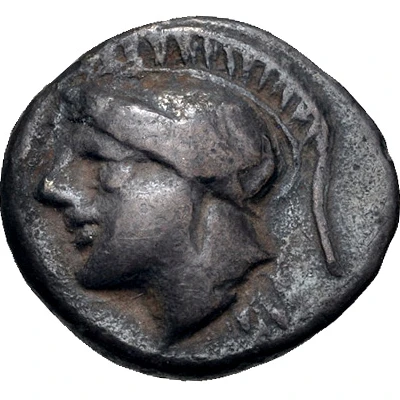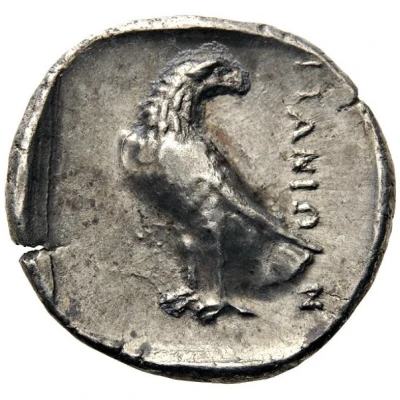


© Classical Numismatic Group, Inc.
Hemidrachm 350 BC - 320 BC
| Silver | 2.62 g | 15.0 mm |
| Issuer | Itanos (Crete (ancient)) |
|---|---|
| Type | Standard circulation coin |
| Years | 350 BC - 320 BC |
| Value | Hemidrachm (½) |
| Currency | Drachm |
| Composition | Silver |
| Weight | 2.62 g |
| Diameter | 15.0 mm |
| Shape | Round (irregular) |
| Technique | Hammered, Incuse |
| Demonetized | Yes |
| Updated | 2024-10-09 |
| Numista | N#137088 |
|---|---|
| Rarity index | 97% |
Reverse
Eagle standing towards the left, head facing right, within incuse square.
Comment
cf. SNG Copenhagen 473 (drachm); Boutin –; cf. Evans 1632 (drachm); cf. Traeger 142 (drachm).
Interesting fact
The Hemidrachm coin from Itanos, Crete, was used as a form of currency in ancient Greece, specifically in the city of Itanos during the 4th century BC. The coin features an image of a bee on one side and a flower on the other, which symbolizes the importance of agriculture and trade in the region. The coin was also made of silver, which was a valuable resource at the time and added to the coin's value and authenticity. Despite being over 2,000 years old, some of these coins have been well-preserved and can still be found in collections and museums today, offering a glimpse into the economic and cultural practices of ancient Greece.



